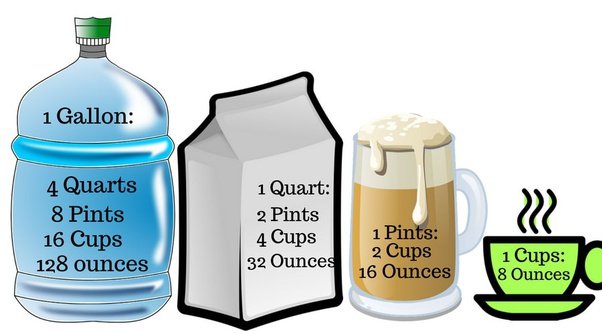How Many Ounces in a Gallon of Water? Unveiling the Simple and the Profound
Water, the elixir of life, is essential for our survival. We use it for drinking, cooking, cleaning, and countless other purposes. But how do we measure this vital resource? In the United States, gallons are a common unit for measuring large volumes of water. But for smaller quantities, ounces are more convenient. So, the question arises: how many ounces are in a gallon of water?
The answer is deceptively simple: there are 128 fluid ounces in one US gallon of water. This conversion factor is widely used across various industries and applications.
However, the world of measurement goes beyond this basic conversion. This article delves deeper into the history of measurement systems, explores the reasons behind using gallons and ounces, and sheds light on alternative measurement systems used around the globe.
A History of Measurement Systems: From Royal Rods to Metric Meters
Throughout history, various civilizations have devised their own systems for measuring length, volume, and weight. The Egyptians used the length of a Pharaoh’s forearm as a unit of measurement. The Romans employed a system based on the human body, with a foot (pes) equal to 16 digits.
In the Middle Ages, a more standardized system emerged in England. The yard was originally defined as the distance from the king’s nose to his outstretched fingertips. Luckily, a more scientific approach was adopted later, and the gallon was established as a unit of volume equal to eight pints.
The metric system, based on meters and liters, emerged in 18th century France and gained global acceptance due to its logical and decimal-based structure. Today, most countries around the world have adopted the metric system as their primary measurement system.
Why Gallons and Ounces? The US Customary System Persists
The United States is one of the few developed nations that continues to use the US customary system, which includes gallons and ounces for measuring liquids. This system has its roots in the British Imperial System and is used in everyday life for various purposes.
Here are some reasons why gallons and ounces remain prevalent in the US:
-
Familiarity and Tradition: People in the US are accustomed to using gallons and ounces for everyday measurements. A gallon of milk or a 16-ounce soda are familiar concepts.
-
Industry Standards: Certain industries, such as construction and agriculture, have established practices and equipment calibrated to the US customary system. Transitioning to the metric system can be complex and costly.
-
Gradual Adoption of Metrics: The US is not entirely resistant to the metric system. The metric system is used in some sectors like science, medicine, and the military. However, a complete switchover is unlikely in the near future.
Beyond Gallons and Ounces: Exploring the Metric System
The metric system, based on meters for length and liters for volume, offers a logical and interconnected system of measurement. Here’s a brief breakdown of the metric units relevant to water measurement:
- Milliliter (mL): A small unit suitable for measuring medication doses or small quantities of water.
- Liter (L): The base unit for liquids in the metric system. One liter is roughly equivalent to 33.8 fluid ounces.
- Kiloliter (KL): A larger unit used for measuring bulk quantities of water, equal to 1000 liters.
While the US continues to use gallons and ounces, understanding the metric system is beneficial for various reasons:
-
Global Communication: The metric system is the universal language of science and technology. Understanding metric units is essential for effective communication in these fields.
-
Travel and Education: Traveling abroad often necessitates familiarity with the metric system. Many educational institutions incorporate metric units into their science curriculum.
-
Simplicity and Logic: The metric system’s decimal base makes conversions between units straightforward and efficient.
Frequently Asked Questions (FAQ)
-
Q: Are there different types of gallons?
-
A: Yes, there are two main types of gallons used in the US: the US liquid gallon (128 fl oz) and the US dry gallon (256 fl oz). The US liquid gallon is most commonly used for measuring liquids like water.
-
Q: How many liters are in a gallon?
-
A: There are approximately 3.785 liters in one US liquid gallon.
-
Q: Will the US ever switch to the metric system completely?
-
A: It’s difficult to predict. While there’s some movement towards metric adoption, a complete switchover is not on the immediate horizon.
-
Q: How can I easily convert between gallons and liters?
-
A: There are online calculators.






More Stories
Where to Watch USMNT vs Jamaica National Football Team
How I Met My Monster
How Should a Ring Fit